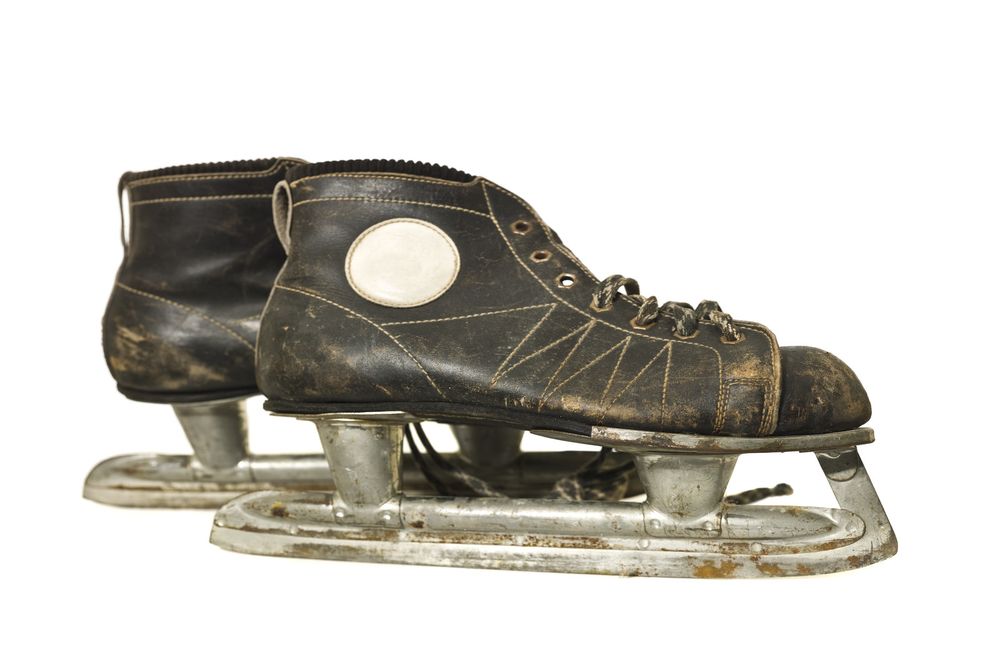As passionate hockey players, we understand the importance of having reliable and well-maintained equipment.
In this informative article, we will explore the key indicators that suggest it may be time to replace your hockey skates. From wear and tear, such as loose rivets and holes, to compromised ankle support and overall skate structure, we will cover all the signs to look out for.
We will also discuss the significance of boot stiffness in protecting your feet and ankles from potential injuries. Additionally, we’ll guide you on how to evaluate the condition of your skate holder and steel blades.
By understanding when to replace your hockey skates, you can ensure optimal performance, efficiency, and most importantly, safety on the ice. So, let’s delve into this essential topic and equip you with the knowledge to make informed decisions regarding your hockey equipment.
Signs of Wear and Tear
One indicator that it may be time to replace your hockey skates is the presence of visible wear and tear. Skates that have been used extensively will show signs of damage, such as frayed laces, worn out toe caps, or scuffed boot material. While some wear and tear can be repaired through skate maintenance, there comes a point where the damage is too severe to fix.
It is important to regularly assess the condition of your skates to ensure optimal performance and safety on the ice. If you notice any significant wear and tear that cannot be repaired, it is recommended to replace your skates to avoid compromising your skating ability and risking injury. Regularly maintaining and repairing skates can extend their lifespan, but ultimately, replacing them when necessary is crucial for a seamless and enjoyable skating experience.
Importance of Boot Stiffness
Boot stiffness is a critical factor to consider when assessing the condition of your hockey skates. Here are four reasons why boot stiffness is important:
- Protection from injury: Stiff boots provide essential support and protection for the feet and ankles, reducing the risk of injuries during sharp turns and quick stops on the ice.
- Enhanced performance for advanced players: Skates with stiffer boots offer advanced players the necessary support and stability for optimal performance on the ice.
- Benefits for beginner skaters: Beginner and intermediate level skaters benefit from the added support and control that stiffer boots provide, helping them to improve their skating skills and technique.
- Testing boot stiffness: To determine if your skates need replacement, push inward at the top of the boot. If there is significant give, it’s time to consider replacing the skates.
Assessing the Skate Structure
The condition of the skate structure can significantly impact your performance and safety on the ice. It is important to regularly assess the condition of your skates to ensure they are in optimal shape. Some skate damage can be repaired through professional skate maintenance, while other damage may warrant skate replacement. Here is a table to help you assess the condition of the skate structure:
| Signs of Skate Damage | Repair Options |
|---|---|
| Cracking, tearing, or splitting | Some damage can be repaired by professionals, while irreparable damage warrants skate replacement |
| Loose rivets | Can be tightened or replaced by professionals |
| Holes in the skates | Can be filled or patched by professionals |
| Major structural damage | Requires replacement of both skates |
| Damaged holder | Holder can be replaced without replacing the skates |
Remember to prioritize your safety and performance on the ice by promptly addressing any skate damage and seeking professional assistance when necessary.
Evaluating the Skate Holder
To properly assess the condition of your hockey skates, it is essential to evaluate the state of the skate holder. The skate holder plays a crucial role in supporting the steel blades and ensuring stability on the ice.
Here are four key factors to consider when evaluating the skate holder:
- Skate holder maintenance: Regularly inspect the holder for any cracks, breaks, or signs of wear and tear. Proper maintenance, such as cleaning and lubricating the moving parts, can extend the lifespan of the holder.
- Upgrading skate holders: If your current skate holder is damaged beyond repair or is no longer meeting your needs, consider upgrading to a new one. Upgraded holders often offer improved performance and durability.
- Replacing cracked or broken holders: If you notice any cracks or breaks in the holder, it is crucial to replace it promptly. A damaged holder can compromise your skating performance and increase the risk of injury.
- Replacing rusted or broken rivets: Rusted or broken rivets can weaken the connection between the holder and the boot. Replace these rivets to avoid the need for a full skate replacement.
Considering the Steel Blades
When assessing whether it is time to replace your hockey skates, it is important to carefully consider the condition of the steel blades. Damaged steel blades may not necessarily require skate replacement. Instead, they can be repaired or replaced individually without removing the holder.
If one blade is broken or damaged, it is recommended to replace both sets of steel blades to maintain balance during skating. Repairing damaged steel blades should be done by professionals to ensure proper maintenance and consistent usage.
It is crucial to properly assess the boot stiffness and condition before deciding on skate replacement.
Frequently Asked Questions
How Often Should I Replace My Hockey Skates?
When considering how often to replace hockey skates, it is important to evaluate the condition of the skates, including loose rivets, holes, compromised structure, and lack of ankle support. Regular maintenance and proper care can extend the lifespan of the skates.
Can I Repair Loose Rivets on My Skates Myself?
Repairing loose rivets on your skates can be done by a professional or using alternative skate repair methods. However, it is important to consider the overall condition of your skates and whether it may be time for a replacement.
Are There Any Signs of Wear and Tear That Can Be Fixed Without Replacing the Skates?
Signs of wear and tear that can be fixed without replacing the skates include replacing damaged holders or rivets, repairing minor structural damage, and replacing broken steel blades. Proper assessment is crucial before deciding on skate replacement.
How Do I Know if My Skate Holder Needs to Be Replaced?
To determine if your skate holder needs to be replaced, inspect for signs of damage such as cracks or breaks. If the holder becomes loose, tighten the screws. Proper maintenance ensures optimal performance and reduces the risk of injury.
Can I Replace the Steel Blades on My Skates Without Replacing the Entire Skate?
Yes, the steel blades on hockey skates can be replaced without replacing the entire skate. Proper skate maintenance includes assessing the condition of the blades and replacing them if necessary to maintain performance and safety on the ice.
Conclusion
In conclusion, recognizing the signs of wear and tear is a crucial factor in determining when it is time to replace your hockey skates. Assessing boot stiffness is also important, as a worn-out boot can affect your performance and potentially lead to injuries. Evaluating the skate structure and holder is another key aspect to consider, as any damage or instability in these areas can compromise your balance and stability on the ice. Additionally, considering the condition of the steel blades is essential, as dull or damaged blades can greatly impact your ability to maneuver and glide smoothly. By staying vigilant and proactive in maintaining your skates, you can ensure optimal performance, efficiency, and safety on the ice. It is important to stay informed and make informed decisions to maintain your competitive edge and prevent potential injuries.









